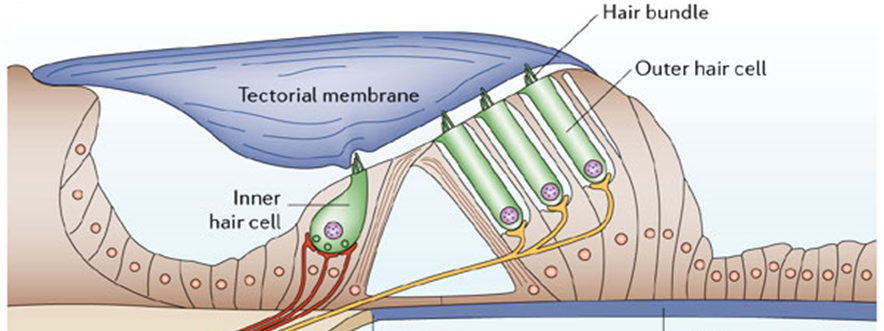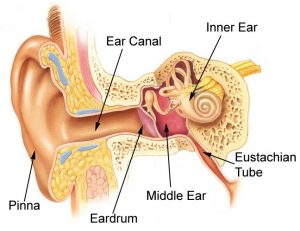Hearing Loss
THE PROBLEM
Severe lack of pharmacotherapy to restore hearing loss
People of all ages, including children, teens, young adults, and older people, can suffer from hearing loss. Despite an enormous global patient population, at present there is no cure for hearing loss, and, to date, no approved pharmacological product indicated for its treatment.
In 2030, WHO estimates 628 million people with disabling hearing loss* worldwide
There is a severe lack of medications / therapeutic options to restore hearing

Hearing impairment impacts 62% of people over the age of 50 years
Growing market (>12 B) with massive unmet need and limited competition
The Biology of Hearing Disorders
Organ of Corti – Architecture of the Cochlea

Neuronal loss
and synapse decoupling cut connections to brain
Ribbon synapse loss
from noise, blast, ischemia/reperfusion, or toxins reduce auditory signaling and can contribute to tinnitus
Inner hair cell loss
from noise, blast, or toxic insult degrades signal transduction
Supporting cell loss
from mechanical or metabolic stress degrades trophic and architectural support
Outer hair cell loss
from noise, blast, ischemia/reperfusion, or toxic insult reduces amplification

Hearing loss is the third most common physical condition, after heart disease and arthritis, reported in western countries. Approximate 20% of the population reports some notable degree of hearing loss, 60% of whom are in school or active in the workforce. Broadly, hearing loss is classified into Conductive, Sensorineural or Mixed Hearing Loss. Conductive Hearing loss arises form disorders of the outer or middle ear structures while Sensorineural Hearing Loss is associated with damage to the structures of the inner ear that translate the physical vibrations of sound into nerve impulses that transmit the perception of sound to the brain. Mixed Hearing loss is a combination of these factors.
Treatments for hearing loss include surgery for appropriate cases, and the use of hearing aides. There are currently no approved drug treatments for hearing loss. Otologic Pharmaceutics Inc. (OPI) is developing its lead oral medication HPN1010 to treat acute episodes of Sensorineural Hearing Loss to prevent the development of permanent hearing disorders. Initial work is focused on Noise Induced Hearing Loss (NIHL), which is being followed closely by research to reduce Cisplatin or Carboplatin Induced Hearing Loss (CIHL).
Reports estimate the potential annual markets for a treatment for NIHL and CINL at approximately $1.9 billion, and $ 500 million per year, respectively. Otologic estimates the potential annual market for its first two drug development projects to be approximately $800 -$950 million.
